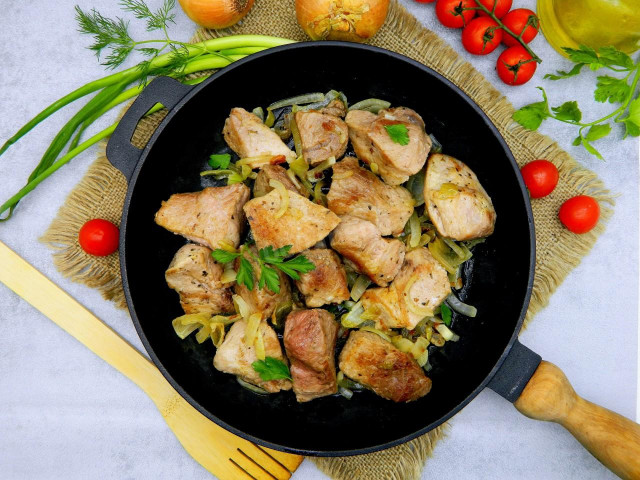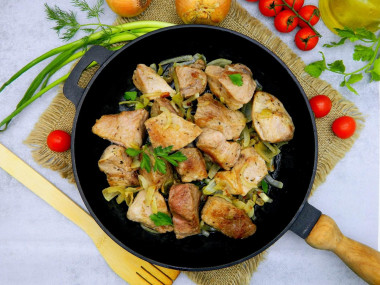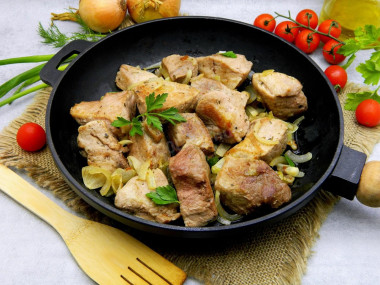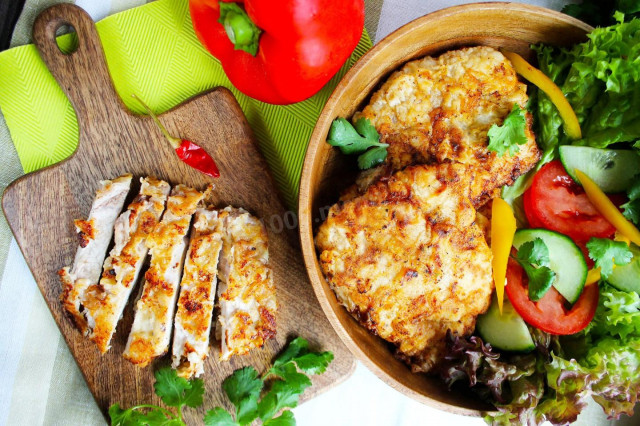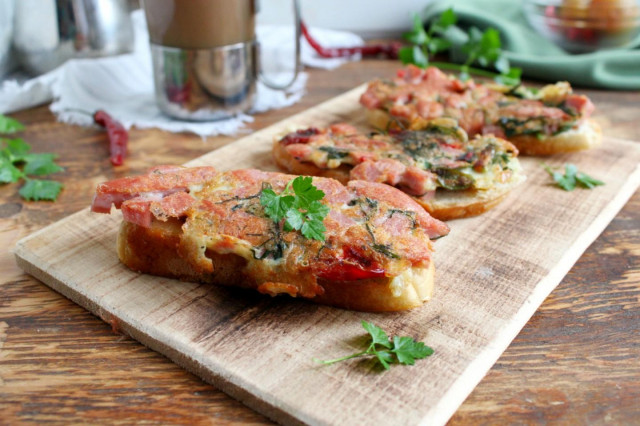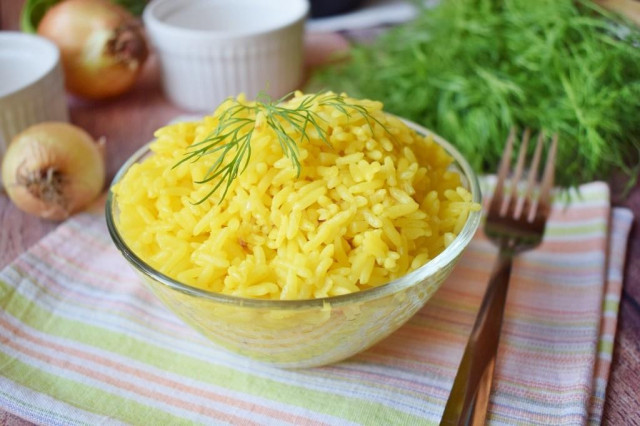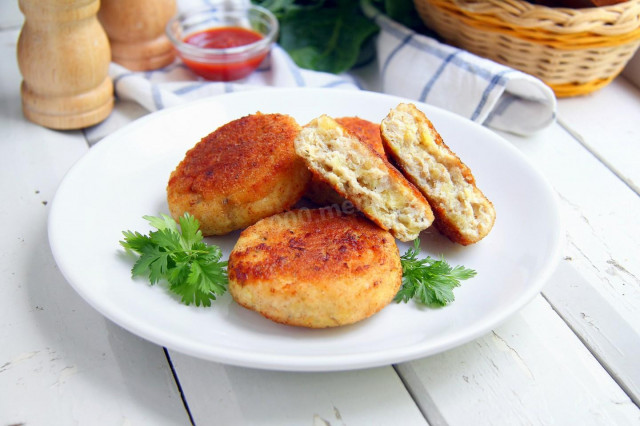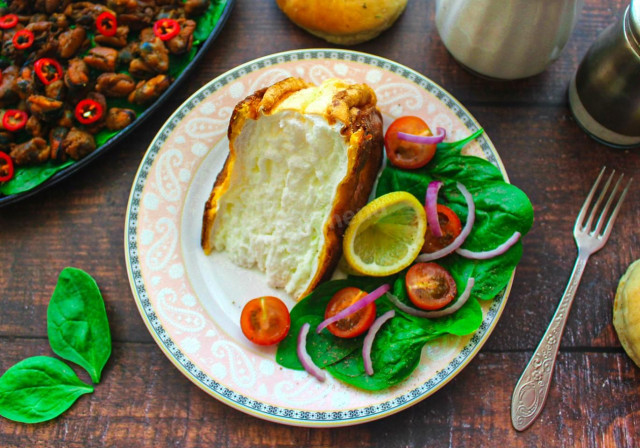Composition / ingredients
Step-by-step cooking
Step 1:
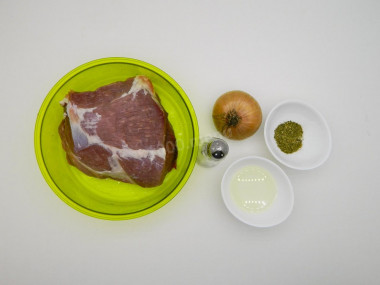
How to fry juicy pork in a frying pan? Not all parts of the carcass are suitable for frying. To make the meat tender and juicy, take the neck, shoulder blade, ham or tenderloin. Choose the meat carefully. It should be pink in color, without an intrusive smell and excessive shine. It will taste better from fresh meat, but if you have frozen, pre-defrost - leave for 8 hours in the refrigerator, then 1-2 hours in the room. Take any spices that are suitable for meat.
Step 2:
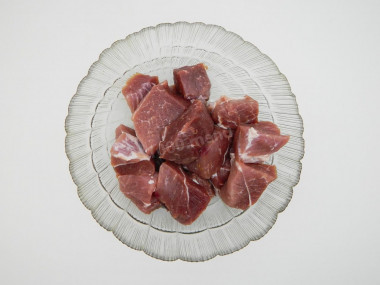
Wash and dry the meat with paper towels so that when frying there are fewer splashes and a more uniform ruddy crust appears on the surface. Cut off excess fat. Cut the meat into large cubes no smaller than a matchbox. Try to leave the larger side of the piece cut across the fibers. So there will be more juice inside.
Step 3:
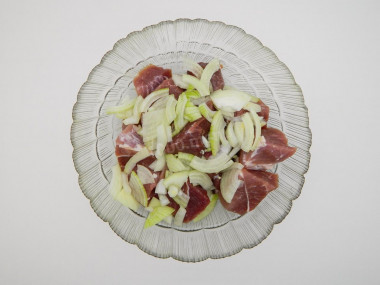
Peel the onion, rinse and cut into half rings or smaller. In this form, it will retain its shape and so it will be convenient to eat. Add the onion to the meat.
Step 4:
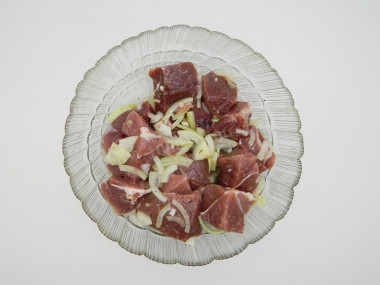
Add spices and a tablespoon of oil. Don't salt yet. It is better not to salt the meat before frying to preserve more juice. Mix everything thoroughly so that each piece is evenly marinated. Leave for 30 minutes at room temperature.
Step 5:
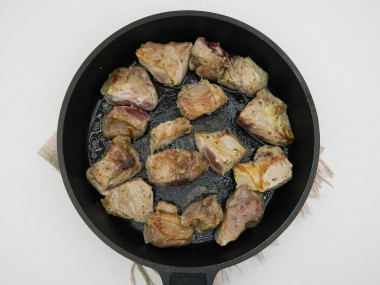
For frying, heat a frying pan with vegetable oil. Note that if the meat is too fatty, then less oil will be required than indicated in the recipe. Sometimes, if the meat is fatty and you don't cut off the fat, you can do without oil at all. Turn on medium or above-average heat. Since the meat is fried longer than the onion, put only pieces of pork in one layer on the pan first. If everything does not fit at once, fry in several rounds. There is no need to close the lid.
Step 6:
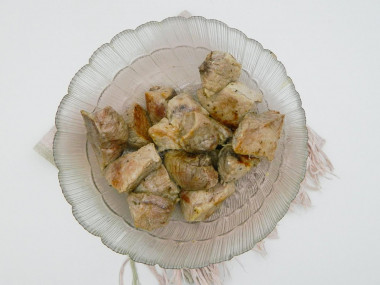
Fry on both sides until golden brown. It took me about 4 minutes on each side. Season the already toasted side with salt. Put the finished pieces in a deep dish, cover with a lid and let "rest" so that the meat comes to readiness.
Step 7:
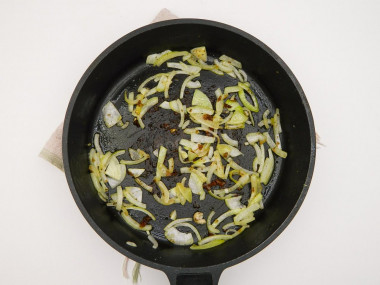
Fry the onion in the remaining oil from the meat in the pan. Fry until it becomes transparent and slightly yellow.
Step 8:
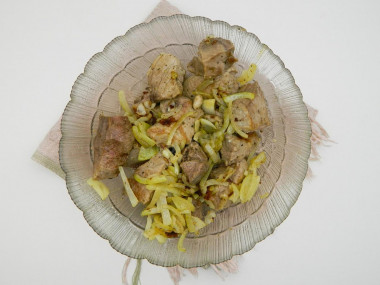
Before serving, mix the meat with onions and warm it up slightly.
Serve hot fried juicy pork with vegetable salad or boiled potatoes.
Press the meat with a knife or a spatula: if the juice appears light, it means it is ready, if the juice is pink or red, you need to continue cooking. It is better not to pierce the meat, namely to press so that all the juice does not flow out and it does not become dry.
For this recipe, it is better to take not frozen, but fresh meat, otherwise the finished meat risks getting dry.
Use oil with a high smoking temperature for frying! Any oils are useful only until a certain temperature is reached - the point of smoking, at which the oil begins to burn and toxic substances, including carcinogens, are formed in it.
Unrefined oils, with rare exceptions, have a low smoking point. There are a lot of unfiltered organic particles in them, which quickly begin to burn.
Refined oils are more resistant to heating, and their smoking point is higher. If you are going to cook food in the oven, on a frying pan or grill, make sure that you use oil with a high smoking point. The most common of the oils with a high smoking point: refined varieties of sunflower, olive and grape.
Caloric content of the products possible in the composition of the dish
- Pork fat - 333 kcal/100g
- Pork meat - 357 kcal/100g
- Pork - low-fat roast - 184 kcal/100g
- Pork chop on a bone - 537 kcal/100g
- Pork - schnitzel - 352 kcal/100g
- Pork shoulder - 593 kcal/100g
- Boar's leg - 113 kcal/100g
- Pork - 259 kcal/100g
- Vegetable oil - 873 kcal/100g
- Salt - 0 kcal/100g
- Onion - 41 kcal/100g
- Spices dry - 240 kcal/100g

